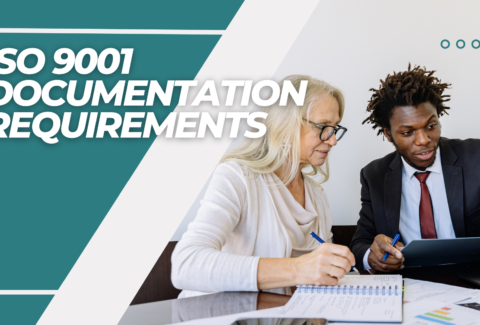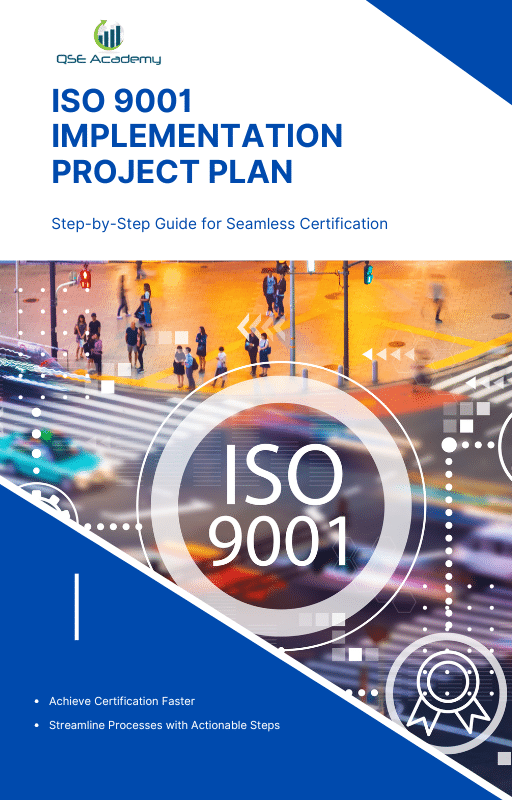How to write a quality manual according to iso 9001 2015?
How to write a quality manual according to iso 9001 2015?
If you’re working on implementing a quality management system (QMS), you’ve probably come across the term Quality Manual ISO 9001 2015. While the ISO 9001:2015 standard doesn’t specifically require a quality manual, many organizations still find it incredibly useful. Why? Because it acts as a high-level document that outlines your QMS, providing clarity for your team, auditors, and stakeholders.
Think of a Quality Manual ISO 9001 2015 as your organization’s go-to guide for quality. It’s where you define your quality policy, objectives, and key processes. It’s also a great way to show your commitment to meeting ISO 9001:2015 requirements and continuously improving your systems. Whether you’re using it to align your team, prepare for an audit, or communicate with customers, a well-crafted quality manual can be a game-changer.
In this guide, we’ll break down how to write a Quality Manual ISO 9001 2015 step by step. From defining its purpose to outlining your processes and referencing key documents, we’ll show you exactly how to create a manual that’s both practical and compliant. Ready to dive in? Let’s get started!
What is a Quality Manual ISO 9001 2015?
Before diving into how to write one, let’s first break down what a Quality Manual ISO 9001 2015 actually is. Think of it as the foundation of your quality management system (QMS). It’s not just a collection of documents—it’s a structured, high-level guide that outlines the key elements of how your organization manages quality.
In simple terms, a Quality Manual ISO 9001 2015 serves as a roadmap. It explains your organization’s quality policy, objectives, and processes, and shows how these align with the ISO 9001:2015 standard. This document provides clarity for employees, builds confidence for stakeholders, and makes it easier for auditors to understand your approach to quality management.
Why Do Organizations Use a Quality Manual?
While ISO 9001:2015 doesn’t mandate a quality manual, many organizations find it valuable because it consolidates critical information in one place. Imagine having a single document that provides a clear overview of your QMS. It’s not only convenient but also incredibly helpful during audits, training sessions, or when onboarding new team members.
The quality manual also communicates your organization’s commitment to meeting ISO 9001:2015 standards. It’s a powerful way to demonstrate that you’re serious about quality, continuous improvement, and delivering value to your customers.
What Should a Quality Manual Include?
Here’s a quick snapshot of what typically goes into a Quality Manual ISO 9001 2015:
- Quality Policy: A statement of your organization’s commitment to quality and how it aligns with ISO 9001:2015 requirements.
- Quality Objectives: Clear, measurable goals that reflect your quality management priorities.
- Scope of the QMS: The boundaries of your QMS, including any exclusions (with justifications).
- Key Processes: An overview of the processes within your QMS and how they interact.
- Roles and Responsibilities: A breakdown of who’s responsible for what in maintaining quality.
- References to Supporting Documents: Links to procedures, work instructions, and records for further detail.
Why This Document Matters
A Quality Manual ISO 9001 2015 is more than just a formality—it’s a tool for success. It ensures everyone in your organization is on the same page, simplifies the audit process, and strengthens your QMS by making it accessible and easy to understand.
Now that we’ve covered what a quality manual is, let’s explore why it’s such an important part of your quality journey. Stick with me!
Why is a Quality Manual Important?
You might be wondering, “Do I really need a Quality Manual ISO 9001 2015 if the standard doesn’t require it?” While it’s technically optional, there’s a reason so many organizations still create one—it’s incredibly helpful. Think of the quality manual as a unifying document that brings clarity, structure, and alignment to your quality management system (QMS). Let’s break down why it’s worth the effort.
1. A Valuable Reference Tool
A Quality Manual ISO 9001 2015 serves as a handy guide for anyone in your organization who needs to understand how your QMS works. Whether it’s a new employee, a team leader, or even an auditor, the manual provides a clear, high-level overview of your quality policies, objectives, and processes.
Imagine having one document that explains the “why” and “how” of your approach to quality. It eliminates confusion and ensures everyone is on the same page, no matter their role in the company.
2. Simplifies the Audit Process
Let’s be honest—audits can be stressful. But having a well-organized Quality Manual ISO 9001 2015 can make a huge difference. Auditors love it because it provides a clear summary of your QMS, including your processes and how they align with ISO 9001:2015 requirements.
Instead of scrambling to pull together information during an audit, your quality manual acts as a one-stop shop for key details. It shows that your organization is not only compliant but also proactive about maintaining quality standards.
3. Enhances Internal Alignment
One of the biggest challenges in any organization is ensuring that everyone understands their role in maintaining quality. A Quality Manual ISO 9001 2015 helps bridge that gap. It outlines roles and responsibilities, explains processes, and communicates your quality policy and objectives in a way that’s easy for everyone to understand.
By having a centralized document, you’re fostering better communication and alignment across teams. Employees feel more confident about their roles, and management can trust that everyone is working toward the same goals.
4. Builds Confidence with Stakeholders
Your customers, suppliers, and other stakeholders want to know that your organization takes quality seriously. A Quality Manual ISO 9001 2015 is a great way to demonstrate your commitment. It shows that you have a structured, well-documented approach to meeting quality standards and continuously improving your processes.
Whether you’re bidding for a new contract or strengthening existing relationships, a quality manual can serve as a tangible representation of your dedication to excellence.
5. Provides a Foundation for Continuous Improvement
ISO 9001:2015 is all about continuous improvement, and your quality manual is the perfect place to document that journey. By regularly updating it to reflect changes in your QMS, you’re ensuring that your organization stays adaptable and aligned with evolving business needs.
The manual isn’t just a static document—it’s a living resource that grows with your organization. When used effectively, it becomes a tool for driving ongoing improvement and achieving your quality goals.
In a Nutshell
A Quality Manual ISO 9001 2015 might not be required, but it’s definitely worth having. It simplifies communication, streamlines audits, and ensures everyone in your organization is aligned with your quality objectives. More importantly, it shows your commitment to maintaining and improving your QMS—a win-win for your team, your customers, and your business as a whole.
Now that you know why a quality manual is so important, let’s dive into the practical steps to create one that’s both compliant and user-friendly. Ready? Let’s get started!
Step-by-Step Guide to Writing a Quality Manual ISO 9001 2015
Now that you know what a Quality Manual ISO 9001 2015 is and why it’s so valuable, let’s roll up our sleeves and start creating one. The great news is that writing a quality manual doesn’t have to be complicated. With a clear structure and some thoughtful planning, you can create a manual that’s both compliant and practical for your organization. Here’s how to do it step by step:
Step 1: Define the Purpose of Your Quality Manual
Before you start writing, take a moment to define why you’re creating a Quality Manual ISO 9001 2015. Is it to provide guidance for your team? To prepare for audits? Or to communicate your commitment to quality to customers and stakeholders?
Knowing the purpose will help you focus on what’s most important and avoid unnecessary details. Remember, your manual should be useful, not just a formality.
Step 2: Start with Your Quality Policy and Objectives
Your quality policy is the heart of your QMS, so it makes sense to start there. It’s a statement of your organization’s commitment to quality and should align with the ISO 9001:2015 requirements.
Next, outline your quality objectives. These should be measurable goals that reflect what your organization is striving to achieve. For example, you might aim to improve customer satisfaction by a specific percentage or reduce production errors over a set period.
Step 3: Define the Scope of Your QMS
The scope section of your Quality Manual ISO 9001 2015 defines the boundaries of your QMS. What areas of your business does it cover? Which processes, locations, or departments are included?
If there are any parts of the ISO 9001 standard that don’t apply to your organization, this is where you can explain and justify those exclusions. For instance, if your company doesn’t do design and development, you can clarify that it’s not part of your scope.
Step 4: Outline Your Key Processes
This is one of the most important parts of your quality manual. List the key processes in your QMS and describe how they interact with each other. For each process, include:
- Inputs and outputs
- Responsibilities (who’s in charge of what)
- Key controls or checkpoints
Using a process map or flowchart can make this section easier to understand. It visually shows how processes connect, helping everyone in your organization see the bigger picture.
Step 5: Reference Supporting Documents
Your Quality Manual ISO 9001 2015 doesn’t need to include every single procedure or work instruction, but it should point readers in the right direction. Include references to supporting documents like:
- Standard operating procedures (SOPs)
- Work instructions
- Records of corrective actions
Think of the quality manual as a roadmap that guides users to more detailed information when they need it.
Step 6: Define Roles and Responsibilities
Clarity is key when it comes to roles and responsibilities. Use this section to outline who is responsible for what within your QMS. Highlight leadership roles, such as the quality manager, and explain how their responsibilities align with ISO 9001:2015 requirements.
This section ensures everyone understands their part in maintaining and improving the QMS.
Step 7: Use Simple, Clear Language
Your quality manual isn’t just for auditors—it’s for your entire organization. Write it in a way that’s easy for everyone to understand. Avoid overly technical jargon and focus on clarity.
Think about your audience: if someone new joined your team tomorrow, could they pick up the manual and understand your QMS? If the answer is yes, you’re on the right track.
What’s Next?
Congratulations! By following these steps, you’ll have a solid foundation for creating a Quality Manual ISO 9001 2015 that’s not only compliant but also practical and effective.
In the next section, we’ll explore some best practices to make your quality manual even better. From keeping it concise to using visuals, we’ll share tips to ensure your manual is as user-friendly as possible. Let’s keep going!
Best Practices for Creating a Quality Manual ISO 9001 2015
So, now you know the key steps to write a Quality Manual ISO 9001 2015—great start! But how do you ensure it’s not only compliant but also effective and easy to use? That’s where best practices come in. A well-crafted quality manual is more than just a document; it’s a tool that empowers your team and streamlines your quality management system (QMS). Let’s explore some tips to make your manual as useful and user-friendly as possible.
1. Keep It Concise and Focused
One common mistake is trying to cram too much information into a quality manual. Remember, the purpose of a Quality Manual ISO 9001 2015 is to provide a high-level overview, not to include every tiny detail.
Best Practice:
- Focus on the essentials: your quality policy, objectives, processes, and scope.
- Use references to link to detailed documents, like procedures or work instructions, instead of repeating their content.
This keeps your manual concise, easy to navigate, and less overwhelming for readers.
2. Use Visuals to Enhance Clarity
Sometimes, a picture really is worth a thousand words. Visual tools like process maps, flowcharts, and diagrams can make your Quality Manual ISO 9001 2015 much easier to understand.
Best Practice:
- Create a flowchart to show how key processes interact.
- Use tables or charts to summarize roles and responsibilities.
- Keep visuals simple and professional—focus on clarity, not complexity.
Visuals not only make your manual more engaging but also help readers quickly grasp the relationships between different elements of your QMS.
3. Regularly Review and Update the Manual
Your quality manual is a living document, not a one-and-done project. Over time, your processes, goals, and even the scope of your QMS might change. Keeping your manual updated ensures it stays relevant and reflects the current state of your organization.
Best Practice:
- Schedule periodic reviews (e.g., annually or after major changes) to check for outdated information.
- Update the manual whenever you revise processes, policies, or objectives.
- Include a version control table to track updates and show auditors you’re maintaining the document.
This habit not only keeps your manual accurate but also reinforces your commitment to continuous improvement.
4. Involve Key Stakeholders
Your Quality Manual ISO 9001 2015 should reflect the collective efforts of your organization, not just one department. Involving key stakeholders in the creation process ensures the manual is comprehensive, accurate, and relevant.
Best Practice:
- Collaborate with department heads, process owners, and the quality team to gather input.
- Get feedback from employees who will use the manual to ensure it’s user-friendly.
- Engage leadership to align the manual with your organization’s overall strategy and vision.
When everyone contributes, the manual becomes a shared resource that truly represents your QMS.
5. Align the Manual with Your Organizational Culture
Your quality manual should feel like it belongs to your organization—not just something copied from a template. Tailoring it to your unique culture, values, and goals makes it more relatable and effective.
Best Practice:
- Use language and examples that resonate with your team.
- Highlight aspects of your QMS that align with your organization’s mission and vision.
- Avoid generic or overly technical phrasing—make it authentic and relevant.
This approach helps employees feel more connected to the manual and the quality goals it represents.
6. Make It Easily Accessible
A quality manual that no one can find or use is, well, not very useful. Accessibility is key to ensuring your Quality Manual ISO 9001 2015 becomes a practical tool for daily operations, audits, and training.
Best Practice:
- Store the manual in a shared location, such as a digital file on your intranet or quality management software.
- Provide hard copies if certain teams or locations prefer physical documents.
- Train employees on where to find the manual and how to use it.
When your team knows where to access the manual and how to use it, it becomes a valuable resource for everyone.
Why Best Practices Matter
By following these best practices, you’ll create a Quality Manual ISO 9001 2015 that isn’t just compliant but also practical, engaging, and easy to maintain. A well-written manual can streamline audits, improve communication, and align your entire organization around quality goals.
Next, let’s look at some common mistakes to avoid when writing your quality manual so you can steer clear of potential pitfalls. Ready to dive into the “don’ts”? Let’s go!
Common Mistakes to Avoid When Writing a Quality Manual ISO 9001 2015
Writing a Quality Manual ISO 9001 2015 might seem straightforward, but there are a few pitfalls that can make the process more challenging than it needs to be. The good news? These mistakes are easy to avoid once you’re aware of them. Let’s go over some of the most common missteps and how to steer clear of them.
1. Overloading the Manual with Too Much Detail
One of the most frequent mistakes is trying to include every single detail about your processes and procedures in the quality manual. While it might seem like you’re being thorough, this approach can make the manual overwhelming and difficult to use.
Why It’s a Problem:
- A bloated manual becomes harder to navigate and understand.
- Including unnecessary details can make updates more time-consuming.
How to Avoid It:
Focus on the big picture—your quality policy, objectives, scope, and high-level process descriptions. Use references to point readers to supporting documents like procedures or work instructions if they need more detail.
2. Using Jargon or Overly Complex Language
Your Quality Manual ISO 9001 2015 should be easy for everyone in your organization to understand. Overloading it with technical terms or jargon can alienate readers and reduce its usefulness.
Why It’s a Problem:
- Employees may struggle to connect with or understand the manual.
- It can create confusion instead of clarity.
How to Avoid It:
Write in simple, clear language. Think about how you’d explain your QMS to a new employee during their first week on the job. Avoid jargon whenever possible and use plain English (or your organization’s preferred language) to make the manual accessible to all.
3. Failing to Align the Manual with Actual Practices
Sometimes, organizations create a quality manual that looks great on paper but doesn’t reflect what’s happening on the ground. This can lead to big problems during audits.
Why It’s a Problem:
- Auditors will quickly spot discrepancies between the manual and reality.
- Employees won’t trust or use a document that doesn’t align with their day-to-day work.
How to Avoid It:
Ensure your Quality Manual ISO 9001 2015 accurately reflects your organization’s actual processes and practices. Collaborate with process owners and employees to gather accurate information and validate it before finalizing the manual.
4. Neglecting to Update the Manual Regularly
Your quality manual isn’t a “set it and forget it” document. Failing to keep it updated as your QMS evolves can lead to outdated information, which might cause confusion or non-conformities during audits.
Why It’s a Problem:
- Outdated manuals don’t reflect current processes or requirements.
- It undermines the credibility and usefulness of the manual.
How to Avoid It:
Set up a regular review schedule (e.g., annually or after major changes). Include a version control table in the manual to track updates and show auditors that you’re maintaining the document.
5. Treating the Manual as a Standalone Document
Another common mistake is viewing the Quality Manual ISO 9001 2015 as a standalone document rather than an integrated part of your QMS.
Why It’s a Problem:
- The manual loses its value if it’s not tied to the rest of your QMS documentation.
- Employees may not see its relevance to their daily work.
How to Avoid It:
Ensure your quality manual is fully integrated into your QMS. Use it as a central hub that links to other key documents like procedures, work instructions, and records. Encourage employees to refer to it as part of their daily activities.
6. Skipping Input from Employees and Stakeholders
Creating a quality manual in isolation can result in gaps, inaccuracies, or a document that doesn’t resonate with those who use it.
Why It’s a Problem:
- Important details might be missed.
- Employees may feel disconnected from the QMS if they weren’t involved in creating it.
How to Avoid It:
Involve employees, process owners, and stakeholders in the creation process. Their input ensures the manual is accurate, practical, and relevant to everyone who interacts with it.
Learning from These Mistakes
By avoiding these common pitfalls, you can create a Quality Manual ISO 9001 2015 that’s not only compliant but also a valuable resource for your organization. Keep it concise, accurate, and reflective of your actual practices, and you’ll have a manual that supports your quality goals and simplifies your audits.
Next, let’s explore the benefits of a well-written quality manual and how it can elevate your quality management system to the next level. Let’s keep going!
Benefits of a Well-Written Quality Manual ISO 9001 2015
Creating a Quality Manual ISO 9001 2015 may seem like a lot of work, but the payoff is well worth it. A well-crafted manual isn’t just a requirement for compliance—it’s a powerful tool that can elevate your organization’s quality management system (QMS) and bring real, tangible benefits. Let’s explore why investing time in creating a quality manual is such a smart move.
1. Improved Clarity and Consistency
A well-written Quality Manual ISO 9001 2015 serves as a clear, centralized resource for everyone in your organization. It ensures that your quality policy, objectives, and processes are easy to understand and accessible to all employees.
The Benefit:
- Employees know exactly what’s expected of them and how their roles contribute to the overall QMS.
- Processes are consistently followed, reducing variability and ensuring quality standards are met.
Having this kind of clarity boosts confidence and ensures everyone is on the same page.
2. Simplified Audit Preparation
Let’s face it—audits can feel overwhelming if you’re not prepared. But with a comprehensive Quality Manual ISO 9001 2015, you’ll have a go-to document that makes the audit process much smoother.
The Benefit:
- Auditors can quickly understand your QMS and how it aligns with ISO 9001:2015 requirements.
- You’ll spend less time scrambling to gather information because everything is already well-organized and ready to go.
Think of it as your secret weapon for acing audits with confidence.
3. Enhanced Employee Engagement
Your quality manual isn’t just for leadership or auditors—it’s a tool for everyone in your organization. When employees can easily access and understand the manual, they feel more connected to the company’s quality goals.
The Benefit:
- Employees are more likely to take ownership of their roles in maintaining and improving quality.
- A stronger sense of engagement leads to better compliance with processes and higher overall performance.
A clear, accessible quality manual helps foster a culture of accountability and pride in quality work.
4. Stronger Customer Confidence
Customers want to work with organizations they can trust. A Quality Manual ISO 9001 2015 is a tangible way to demonstrate your commitment to meeting their expectations and delivering consistent quality.
The Benefit:
- Customers feel reassured knowing your organization follows internationally recognized quality standards.
- It can give you a competitive edge when bidding for contracts or building new partnerships.
In short, a solid quality manual strengthens your reputation and builds trust with customers.
5. A Foundation for Continuous Improvement
ISO 9001:2015 is all about continuous improvement, and your quality manual is the perfect place to document your progress. By keeping it updated and reflective of your current practices, it becomes a living document that evolves with your organization.
The Benefit:
- You can easily track and communicate changes to your QMS.
- It helps identify areas for improvement and ensures those improvements are implemented effectively.
A quality manual that grows with your business keeps your QMS aligned with both your goals and the ISO 9001:2015 standard.
6. Streamlined Training and Onboarding
For new employees, getting up to speed on your organization’s QMS can be a challenge. A Quality Manual ISO 9001 2015 makes the process much easier by providing a clear overview of how things work.
The Benefit:
- New hires can quickly understand your quality policy, objectives, and processes.
- It reduces the time and effort required for training, making onboarding more efficient.
A great quality manual is like a user-friendly guidebook for your organization’s approach to quality.
Why These Benefits Matter
At its core, a Quality Manual ISO 9001 2015 is about more than just compliance—it’s about creating a resource that adds real value to your organization. From improving communication and engagement to simplifying audits and building customer trust, the benefits are far-reaching.
Next, let’s wrap things up with a quick recap and some final tips for creating a quality manual that truly works for your business. You’re almost there!
Conclusion: Crafting a Quality Manual ISO 9001 2015 That Works
Creating a Quality Manual ISO 9001 2015 might feel like a big task at first, but it’s one of the most valuable tools you can have for your quality management system (QMS). By taking the time to carefully write and maintain your manual, you’re not just checking a box for compliance—you’re building a resource that simplifies processes, aligns your team, and boosts confidence in your organization’s commitment to quality.
A Quick Recap
Here’s a summary of what we’ve covered:
- A Quality Manual ISO 9001 2015 provides a high-level overview of your QMS, including your quality policy, objectives, and key processes.
- It’s a powerful tool for improving clarity, simplifying audits, engaging employees, and enhancing customer trust.
- To create one, focus on defining your scope, outlining your processes, referencing key documents, and involving your team.
- Follow best practices, like keeping it concise, using visuals, and reviewing it regularly to ensure it stays relevant.
- Avoid common mistakes like overloading it with details, using unclear language, or letting it become outdated.
When done right, your quality manual becomes more than just a document—it’s a foundation for continuous improvement and a reflection of your organization’s dedication to excellence.
Final Tips for Success
- Make It Practical: Write the manual with your audience in mind, ensuring it’s easy to read and use.
- Keep It Relevant: Regularly update the manual to reflect changes in your QMS or organizational goals.
- Leverage It Fully: Use the manual as a training tool, a reference during audits, and a way to communicate your quality commitment to stakeholders.
Take the First Step
Whether you’re starting from scratch or improving an existing manual, remember that the goal is to create a document that serves your organization—not the other way around. A well-crafted Quality Manual ISO 9001 2015 should make your life easier, your processes smoother, and your quality management stronger.
So, what are you waiting for? Start building (or refining) your quality manual today—you’ve got all the tools and tips you need to succeed. And remember, every step you take brings your organization closer to a culture of quality that benefits your team, your customers, and your business as a whole.
Good luck—you’ve got this!
Looking for More Resources on ISO 9001?
Looking for ISO 9001 Resources Tailored to Your Industry?
If this article helped clarify ISO 9001, take the next step with our industry-focused tools designed to simplify your certification journey:
📦 ISO 9001 Documentation Kits by Industry: Whether you’re in manufacturing, construction, consulting, or healthcare — we have complete, ready-to-use documentation tailored for your sector.
🎓 Online ISO 9001 Training: Learn how to implement ISO 9001 effectively with our easy-to-follow video lessons, real-world examples, and practical exercises.
📋 ISO 9001 Checklist: Download our step-by-step checklist to ensure your QMS meets all the 9001:2015 requirements from start to finish.
These resources are crafted to save you time, reduce stress, and help you achieve certification with confidence. Choose your industry and start now!

make ISO standards less intimidating and more approachable for everyone.
Whether it’s ISO 9001, ISO 22000, or the cosmetics-focused ISO 22716,
I’ve spent my career turning complex jargon into clear, actionable steps
that businesses can actually use. I’m not here to call myself an expert—I prefer “enthusiast” because I truly love what I do.
There’s something incredibly rewarding about helping people navigate food safety and quality management systems
in a way that feels simple, practical, and even enjoyable.
When I’m not writing about standards, you’ll probably find me playing Piano 🎹, connecting with people, or diving into my next big project💫.
- I’m an engineer specialized in the food and agricultural industry
- I have a Master’s in QHSE management and over 12 years of experience as a Quality Manager
- I’ve helped more than 15 companies implement ISO 9001, ISO 22000, ISO 22716, GMP, and other standards
- My clients include food producers, cosmetics manufacturers, laboratories, and service companies
- I believe quality systems should be simple, useful, and efficient
- Outside of work, I play piano and love learning something new every day
Let’s make ISO less about stress and more about success! 🙏






















